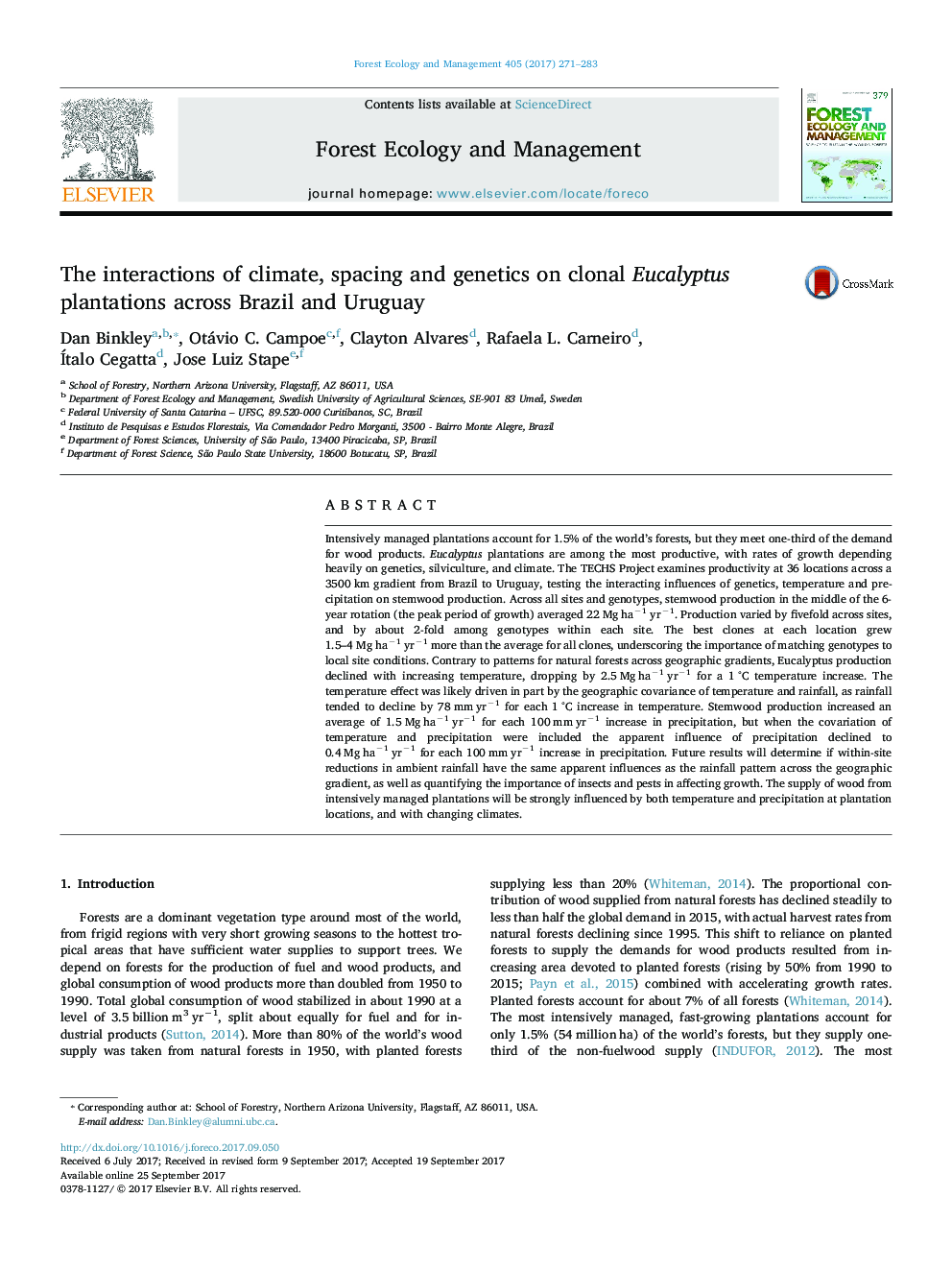| کد مقاله | کد نشریه | سال انتشار | مقاله انگلیسی | نسخه تمام متن |
|---|---|---|---|---|
| 6459091 | 1421353 | 2017 | 13 صفحه PDF | دانلود رایگان |
- Survival and growth of Eucalyptus are examined across a 3500Â km gradient.
- Stemwood production increased by 0.4-1.5 Mg haâ1 yrâ1 for each 100 mm yrâ1 increase in precipitation.
- Stemwood production declined by by 2.5 Mg haâ1 yrâ1 for each 1 °C temperature increase.
- Production varied strongly among genotypes, with the best clones growing 1.5-4 Mg haâ1 yrâ1 more than the average for all clones within a site.
Intensively managed plantations account for 1.5% of the world's forests, but they meet one-third of the demand for wood products. Eucalyptus plantations are among the most productive, with rates of growth depending heavily on genetics, silviculture, and climate. The TECHS Project examines productivity at 36 locations across a 3500 km gradient from Brazil to Uruguay, testing the interacting influences of genetics, temperature and precipitation on stemwood production. Across all sites and genotypes, stemwood production in the middle of the 6-year rotation (the peak period of growth) averaged 22 Mg haâ1 yrâ1. Production varied by fivefold across sites, and by about 2-fold among genotypes within each site. The best clones at each location grew 1.5-4 Mg haâ1 yrâ1 more than the average for all clones, underscoring the importance of matching genotypes to local site conditions. Contrary to patterns for natural forests across geographic gradients, Eucalyptus production declined with increasing temperature, dropping by 2.5 Mg haâ1 yrâ1 for a 1 °C temperature increase. The temperature effect was likely driven in part by the geographic covariance of temperature and rainfall, as rainfall tended to decline by 78 mm yrâ1 for each 1 °C increase in temperature. Stemwood production increased an average of 1.5 Mg haâ1 yrâ1 for each 100 mm yrâ1 increase in precipitation, but when the covariation of temperature and precipitation were included the apparent influence of precipitation declined to 0.4 Mg haâ1 yrâ1 for each 100 mm yrâ1 increase in precipitation. Future results will determine if within-site reductions in ambient rainfall have the same apparent influences as the rainfall pattern across the geographic gradient, as well as quantifying the importance of insects and pests in affecting growth. The supply of wood from intensively managed plantations will be strongly influenced by both temperature and precipitation at plantation locations, and with changing climates.
Journal: Forest Ecology and Management - Volume 405, 1 December 2017, Pages 271-283
